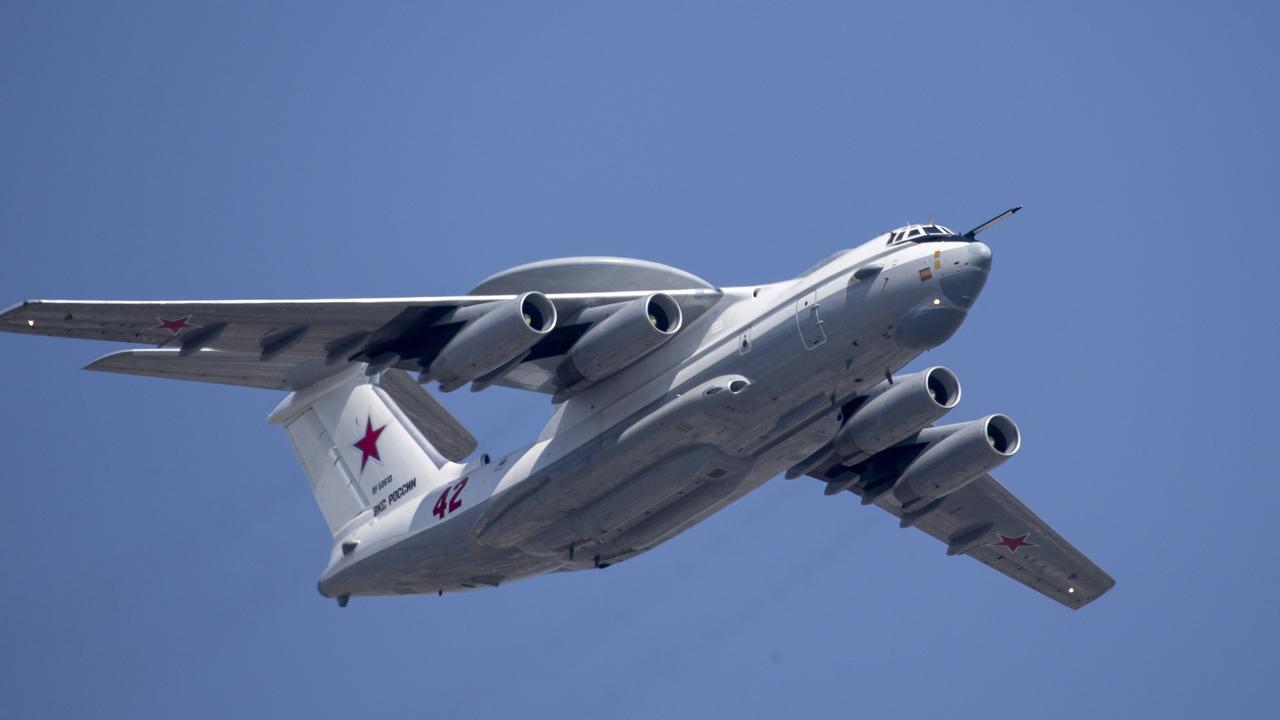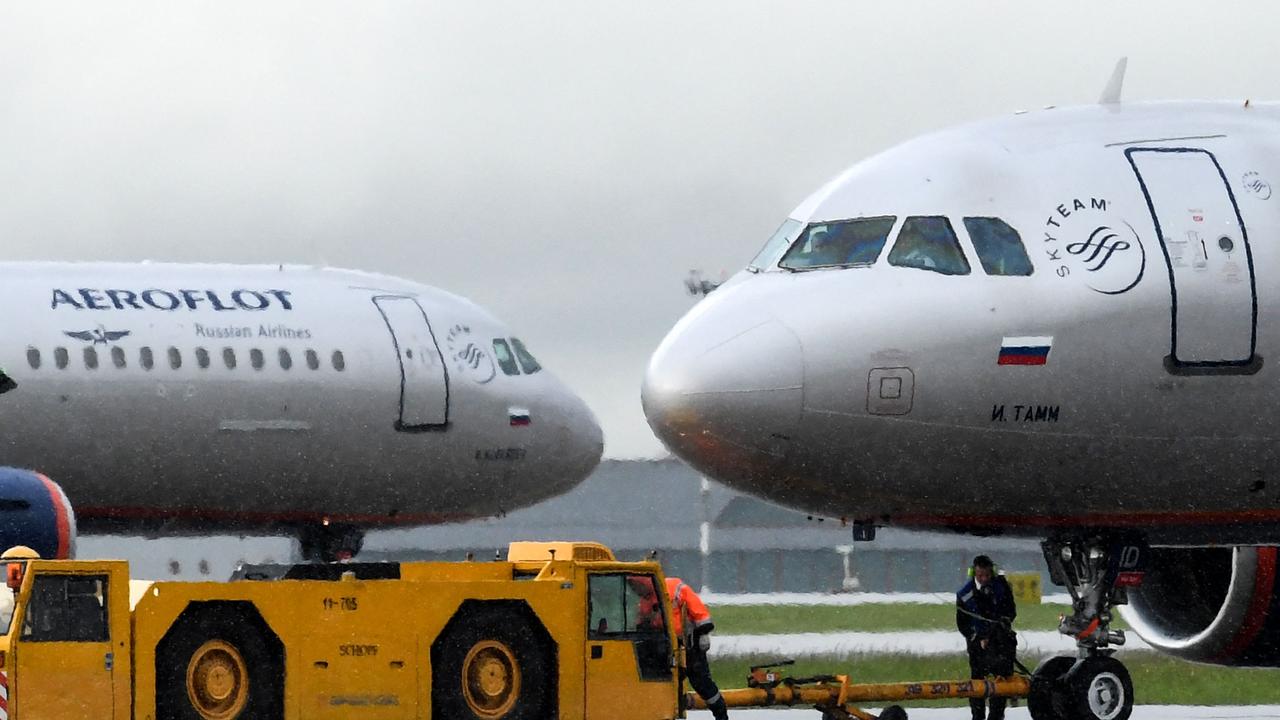Tiny islands at the heart of major clash between four superpowers
Two tiny islands have suddenly been thurst into the middle of an intense warplane stand-off between four global superpowers.

World
Don't miss out on the headlines from World. Followed categories will be added to My News.
Only around 50 people call the tiny islands of Liancourt Rocks home, but overnight they found themselves in the middle of an intense warplane stand-off between four global superpowers.
South Korean air force jets fired 360 rounds of warning shots in the chaotic scenes — involving warplanes from Russia, China and Japan — over the rocky islets in the Sea of Japan.
Japan scrambled jets to intercept, saying it backed South Korea’s claims that Russia had violated the airspace by sending two Tu-95 bombers and one A-50 airborne early warning and control aircraft over the islands.
However, a potential reason for Russia targeting airspace over the South Korean-held islets, roughly halfway between South Korea and Japan, manifested itself as the two nations issued conflicting statements on the dramatic incident.
Japan, which claims ownership over the islets, protested to South Korea for firing warning shots over Japanese airspace.
However, South Korea then hit back saying it couldn’t accept the Japanese statement, repeating its claims that the islets are South Korean territory.
And, if you take a look at South Korean and Japanese government websites, it becomes clear that the two cannot see eye-to-eye on the Liancourt Rocks.
The Koreans refer to the islets as Dokdo, and the nation’s Ministry of Foreign Affairs website shows a detailed timeline which purports to show you “Why Dokdo is Korean Territory”.
Flick over to the Japanese Ministry of Foreign Affairs website, and you’ll see a very different version of events.


“Takeshima is indisputably an inherent part of the territory of Japan, in light of historical facts and based on international law,” the department writes in a strongly-worded statement.
“The Republic of Korea has been occupying Takeshima with no basis in international law. “Any measures the Republic of Korea takes regarding Takeshima based on such an illegal occupation have no legal justification.”
TENSIONS RISE BETWEEN JAPAN AND SOUTH KOREA
To make matters worse, relations between Japan and South Korea are said to have hit rock bottom in recent weeks.
A spat between the pair reignited earlier this month, when Tokyo announced it would restrict exports of three materials used in South Korean smartphone chips and displays of hi-tech materials to Seoul.
In response, South Korean President Moon Jae-in accused Tokyo of a dummy spit over court orders telling Japanese companies to compensate forced labourers during Japan’s 1910-1945 colonial rule of the Korean peninsula.
Added to the resentment is an ongoing feud about the Korean women forced to be sex slaves for Japanese soldiers during the occupation — known in Japan as “comfort women”, which is a euphemism for “prostitute”.
More than 70 years after the end of World War Two, historical revisionists in Japan have added fuel to the fire by suggesting there’s no evidence these women were coerced or that the Japanese military was involved in their recruitment and confinement.
The implication being, the women were prostitutes and it has infuriated many in South Korea.


So on Tuesday, when Russia decided it would fly warplanes over two tiny islets that have been the source of so much tension between the two nations, you can see why sparks began to fly.
A senior South Korean official told theNikkei Asian Review the provocative flyover may have been an attempt to test the relationship between Japan and South Korea — as well as the three-way partnership with their biggest military ally, the United States
“The incident was a test of South Korea’s alliance with the US, which some say are weakening, and to widen rifts in our three-way security partnership with Japan,” the official told the publication.
HUNDREDS OF WARNING SHOTS FIRED
The chaotic scenes over the Liancourt Rocks on Tuesday began when South Korea said three Russian military planes — two Tu-95 bombers and one A-50 airborne early warning and control aircraft — entered the South’s air defence identification zone off its east coast before the A-50 intruded in South Korean airspace.
Russia said later two of its Tu-95MS bombers were on a routine flight over neutral waters and didn’t enter South Korean territory.
South Korea said it was the first time a foreign military plane had violated its airspace since the end of the 1950-53 Korean War.
According to South Korean accounts, an unspecified number of South Korean fighter jets, including F-16s, scrambled to the area and fired 10 flares and 80 rounds from machine guns as warning shots.
Seoul defence officials said the Russian reconnaissance aircraft left the area three minutes later but returned and violated South Korean airspace again for four minutes.
The officials said the South Korean fighter jets then fired another 10 flares and 280 rounds from machine guns as warning shots.

But the commander of Russia’s long-range aviation forces denied any of the planes violated South Korean airspace and shots were fired.
“If the Russian pilots had identified such a threat to themselves, they would have immediately given an appropriate response,” Lt-Gen Sergei Kobylash said, according to Russian news agencies.
He said South Korean military planes escorted the Russian planes over neutral waters, which he called “aerial hooliganism”.
South Korea’s presidential national security adviser, Chung Eui-yong, told top Russian security official Nikolai Patrushev that South Korea viewed Russia’s airspace violation “very seriously” and would take “much stronger” measures if a similar incident occurred, according to South Korea’s presidential office.
Pavel Felgenhauer, an independent Russian military analyst, told the Associated Press he believed the incursion could have been a navigation mistake. He also suggested the incident would not have serious consequences.
“South Korea right now is not very interested in pressing this into a kind of long-term worsening of relations,” he said.
The former Soviet Union supported North Korea and provided the country with weapons during the Korean War that killed millions.
In 1983, a Soviet air force fighter jet fired an air-to-air missile at a South Korean passenger plane that strayed into Soviet territory, killing all 269 people on-board.
Relations between Seoul and Moscow gradually improved, and they established diplomatic ties in 1990, a year before the breakup of the Soviet Union.

The Russian statement accused South Korean aircraft of trying to hamper the flights of Russian jets before “a vague missile defence identification area” it said South Korea unilaterally defined.
Russia said it had raised its concerns about the zone before.
Before their reported joint flights with the Russian planes, the Chinese warplanes entered South Korea’s air defence identification zone off its southwest coast earlier on Tuesday, South Korea’s Defence Ministry said.
Seoul says Chinese planes have occasionally entered South Korea’s air defence identification zone in recent years.
South Korea’s Foreign Ministry and Joint Chiefs of Staff registered their official protests with Beijing when they summoned China’s ambassador and defence attache.
Chinese Foreign Ministry spokeswoman Hua Chunying said she was not clear about the situation but noted the air defence identification zone was not territorial airspace and others were entitled to fly through it.
She took issue with a reporter’s use of the word “violation” to ask about China’s reported activity in South Korea’s air defence identification zone.
“I feel that given China and South Korea are friendly neighbours, you should be careful when using it because we are not clear about the situation,” she said.
With AP
Originally published as Tiny islands at the heart of major clash between four superpowers







